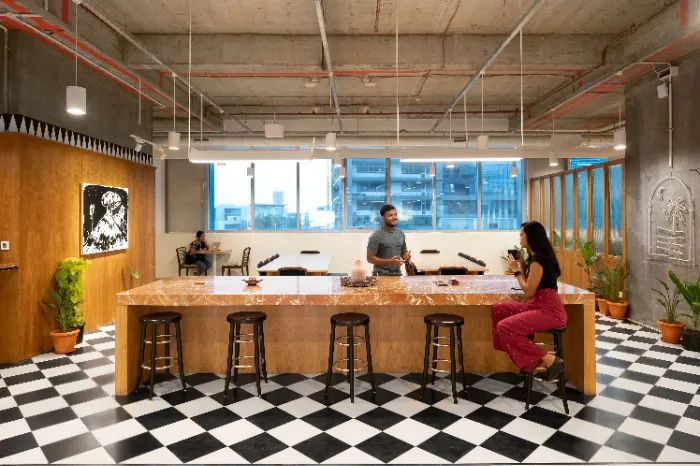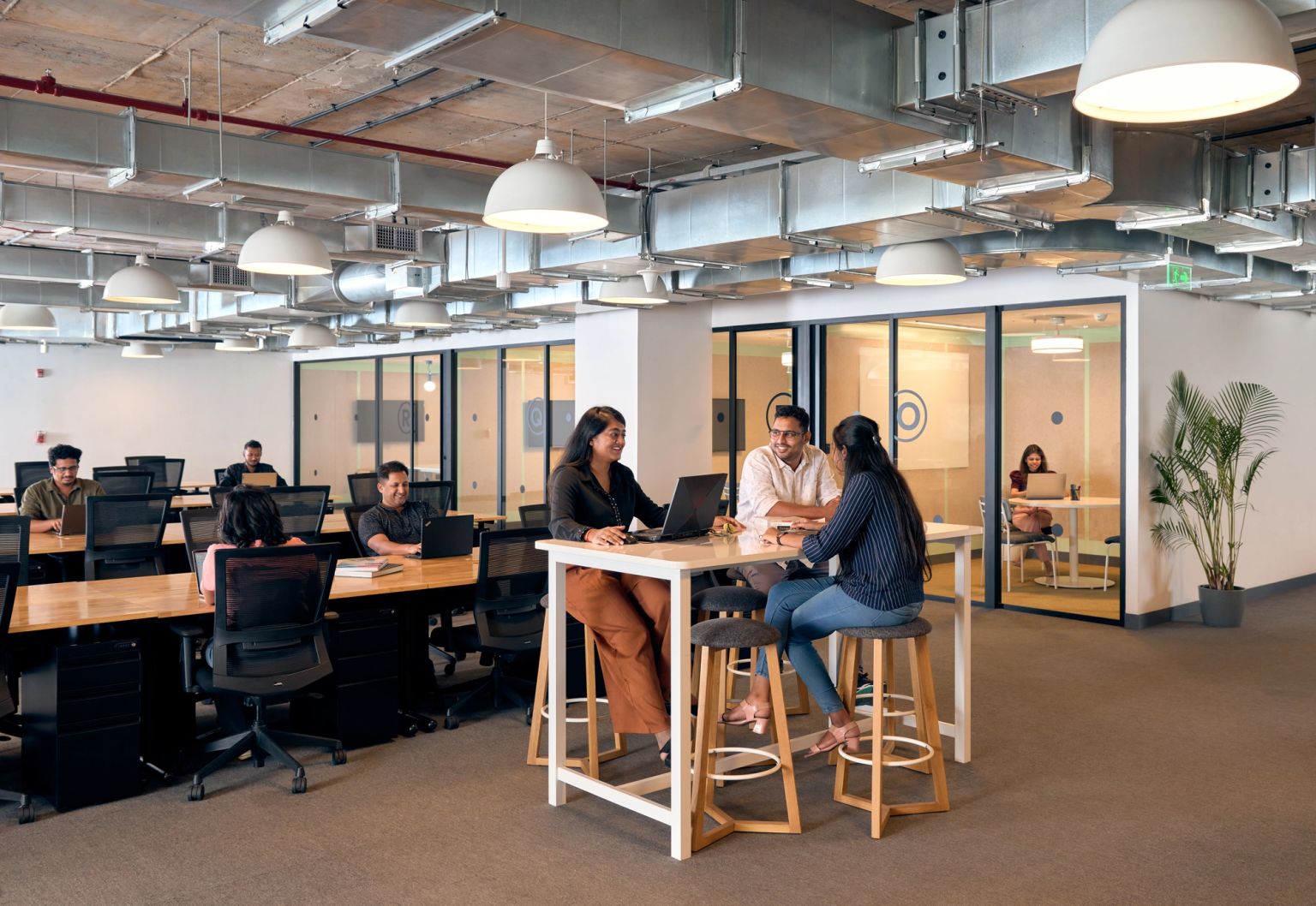CULTURE & COMMUNITY
Maintaining employee experience in a hybrid model of work

2022 will be the year where hybrid work models will shift from being the ‘new’ normal to being the norm, and HR leaders must respond with agility to create a compelling employee experience for their people.
The past two years have been a testament to hope and resilience; these lessons have informed us that productivity and flexibility aren’t mutually exclusive. To have a happy workforce, organisations must adopt flexible work models that respond to the changing needs of employees. Having acknowledged the merits of the hybrid model, organisations and HR leaders have realised that employee experience has moved beyond the physical office space to the overall experience of being a part of an organisation, a community, its values and culture.
As 2022 unfolds and traditional work models give way to incorporate greater flexibility, physical workspaces are increasingly becoming a space for important events or collaboration, while everyday work continues in hybrid modes. This fast-paced adoption of hybrid work has led to the emergence of trends that HR leaders must be cognizant of, while creating the best employee experience for their workforce.
Redefining the employment value proposition
During the pandemic, employees struggled to juggle between their personal and professional commitments and looked at employers for extra support. Many employees across the world suffered from burnout, but it was beyond that. The pandemic gave people a lot of time to think about what they really want from their personal lives, their workplaces and their employers. The definition of success was revisited by many and it was no longer defined purely by rewards or status, position or titles.
The intangible expectations and quality of life that people want to lead became clear to many employees across the world. Embedding wellbeing into work life experience, building resilience and enhancing productivity will become a top priority for HR leaders. Organisations will engage in ongoing communication with their workforce, be compassionate and instil a sense of belongingness and community in employees after prolonged periods of pandemic induced isolation and loneliness. Providing healthcare benefits, access to mental health support, employee assistance programmes, wellness days, mental health leave, meeting-free days, wellness tools and resources etc, are examples of how organisations can step up for their employees’ wellness.
Before Covid-19, many companies were obsessed with offering the coolest perks, but the pandemic highlighted the benefits that matter, impacting people’s day-to-day lives. For example, a lot of women ended up leaving the workforce for caretaking responsibilities and now organisations are investing in benefits to attract them back. People are looking for healthcare, education, childcare and flexible work schedules to care for family and friends, and an environment of trust. Employees have varied priorities—and companies will need to respond.
Communication for valuable feedback
In a highly connected world and high level of awareness enabled by technology and social media, grassroot advocacy and activism may grow. Organisations may begin to see people unionising or advocating for their rights. Conducting frequent employee surveys helps gather first-hand information on employee experience and changing needs and preferences.
Anonymous feedback tools, ‘tell us anything’ platforms, ‘Feedback Fridays’ with the CEO, 1:1s, town halls with leadership teams, employee led task forces and greater representation in decision making forums, can help an organisation make informed changes, by listening to people. It leads to empowerment amongst employees and makes them feel heard and valued. It further helps identify workforce issues beforehand so that they can be resolved and addressed proactively.
Engage employees through a sense of community
HR leaders need to keep innovating to generate a sense of belonging and togetherness in a hybrid and flexible world. Monthly events to celebrate success and recognise learnings from failures, rituals to celebrate personal milestones like marriages, baby showers, promotions, etc and recognising and rewarding collaboration and teamwork can help employees feel in sync with the organisation.
Successful engagement programmes help employees in having a better understanding of the vision and goals of the company, and establish a direct connection between their professional contributions and the overall growth of the company.
Showing gratitude for each other and giving back to the community, through initiatives that can create long term sustainable impact, are a great engagement lever that provides people with a sense of purpose. Employee Resource Groups to drive inclusion, equity and diversity goals are a great channel to help employees make a difference to underserved communities and contribute to building an organisation culture they are proud of.
Employees have had time in 2021 to personalise their home offices. Now that they’re comfortable and connected, it’s going to take a lot to convince people to return to a pre-pandemic routine. Businesses need to start thinking about their workspace in ways that people are motivated to physically show up, making it not just fun but also enabling human interaction, learning and helping to nurture networks and relationships. Employees will be given access to shared workspaces ‘near home’ for greater collaboration.
Invest in a learning culture
Creating platforms for employees to focus on learning and upskilling themselves is essential for preparing them for future roles. Promoting continuous learning as part of the organisational culture helps leaders encourage employees to focus on their personal development, helping them unleash their highest potential. HR leaders must provide their employees with the right opportunities like further education programmes and access to professional courses to keep up with the changing dynamics of their respective industries and technology led changes.
Don’t underestimate the value of onboarding
The onboarding process is most often an employee’s first experience with the organisation. Creating a connection right from the very first day especially in a hybrid setting would be the first step towards defining a relationship and experience that the employee cherishes during their tenure. Investment in a robust 90-day onboarding and assimilation programme is recommended. Familiarisation with key functions and stakeholders, learning about processes and cultural nuances through a buddy, providing clarity of goals and performance expectations and building relationships with the team and leadership, is necessary for accelerating performance and cultural context setting.
The changes brought around by the pandemic have revolutionised the way employees work, and where they work. 2022 will be the year where hybrid work models will shift from being the ‘new’ normal to being the norm, and HR leaders must respond with agility to create a compelling employee experience for their people. HR leaders will need to build cultures that offer flexibility, benefits, and opportunities that are relevant and valuable for a diverse workforce.
Related Blogs:

CULTURE & COMMUNITY
Many professionals now deal with stress regularly, with tight deadlines and long work hours in a stressful workplace. In such a demanding and fast-paced work culture, mindfulness can be an effective strategy.

CULTURE & COMMUNITY
A buddy system involves assigning a new employee a coworker buddy. The buddy, who is an experienced worker, guides the new employee for the first weeks or months of work.

